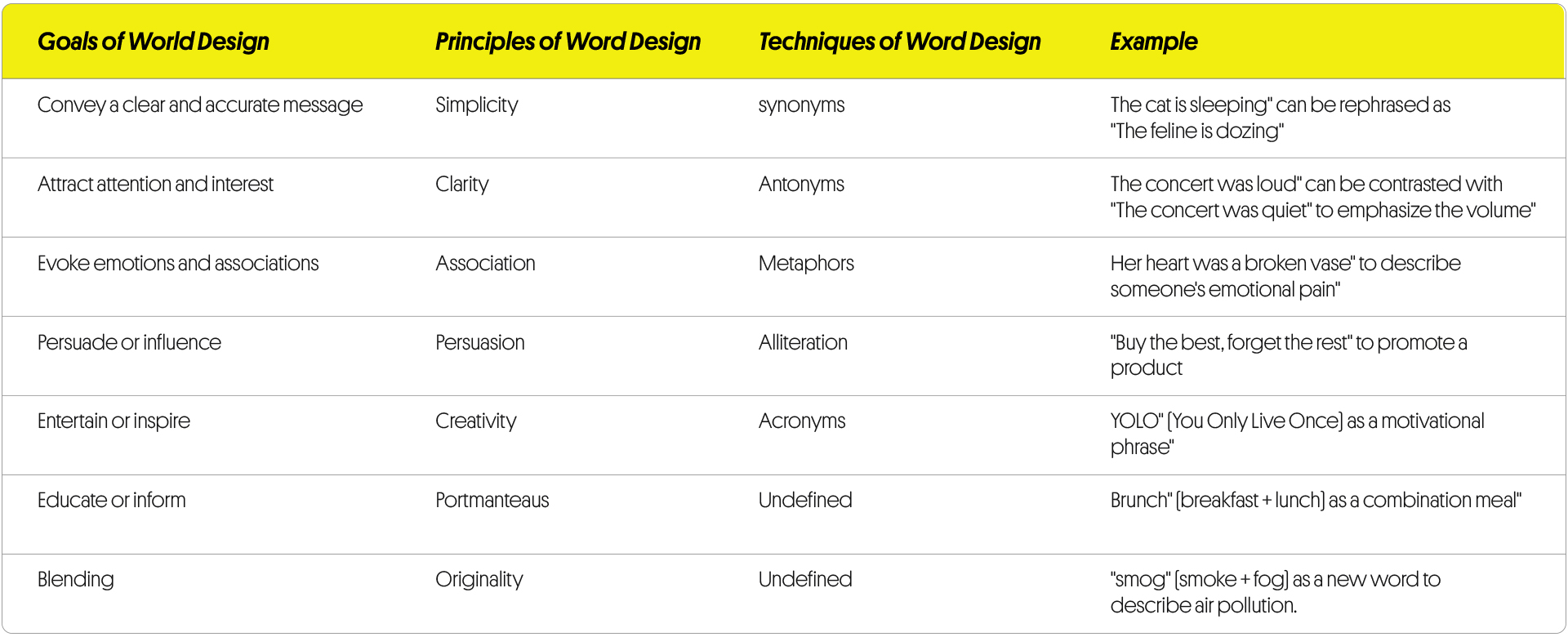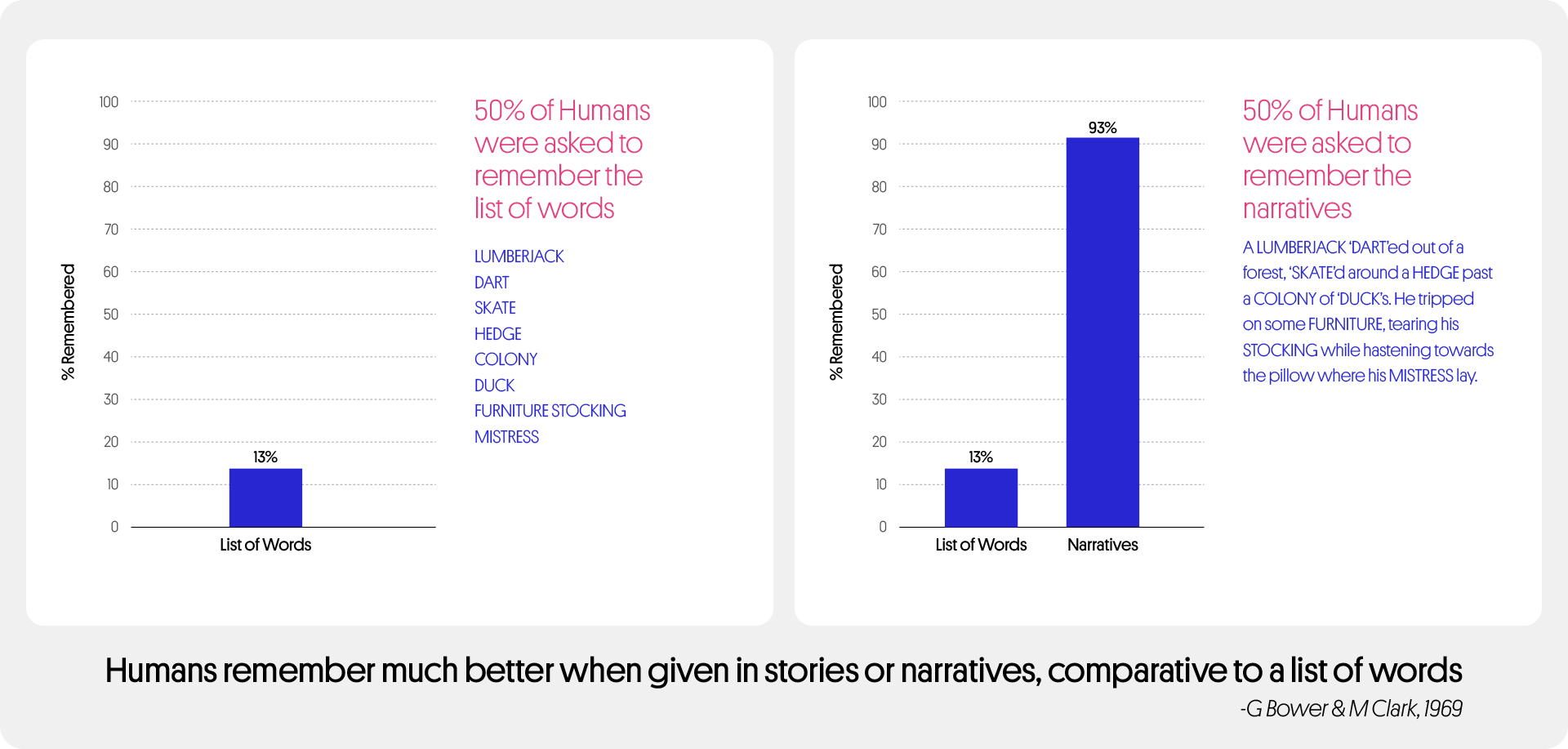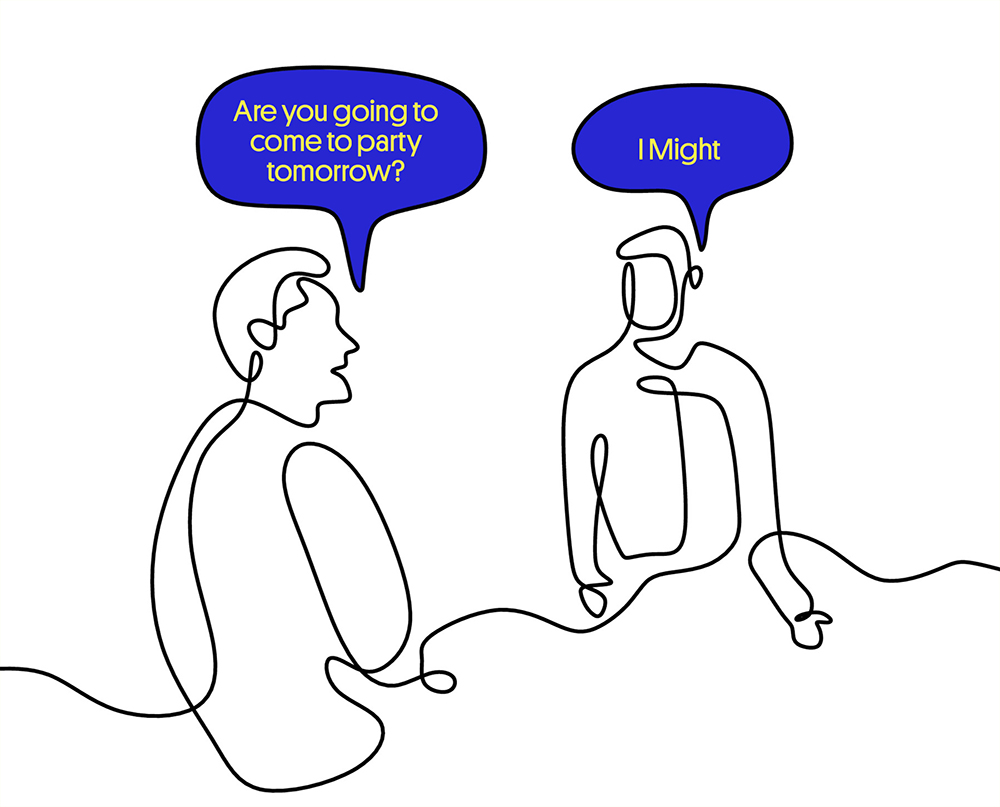Words wield immense power when it comes to communication, persuasion, and creativity.
However, crafting effective terms that cater to different situations needs careful consideration. Measuring the chance of specific phrasing can improve comprehension of usage implications and meanings to achieve fruitful results meaningfully.
In this post, we plan to dissect various principles that would aid you in selecting the right language for your message’s context whilst also briefly going through examples in areas encompassing behavioural economics, and marketing among others.
What is word design?
Word design demands careful consideration when crafting language with specific intentions in mind. By skillfully selecting vocabulary appropriate for any given context or audience – whether by creating original terminology or moulding existing words one may achieve their desired effects.
The scope of word design stretches across many spheres – from branded materials like logos & labels; to writing formats popularly used in headlines or poems through instructional lines that lead you through tasks from start to finish; each painstakingly designed with different approaches all depending on their desired aim.
Effective designs are influenced by many variables including matters such as tone/style preferences paired with genre specifications set forth specifically according to cultural expectations formulated for target consumers/audience members alike.
Using language in an optimal manner is a fundamental element towards achieving effective communication. This skill holds true for various formats of textual content. A few instances below showcase how word design can be advantageous across different contexts.
1. Headlines: A good headline should be attention-grabbing and informative. For example, “Breaking News: Earthquake Strikes City” is a clear and concise headline that conveys important information.
2. Slogan: Crafting a memorable slogan can serve as a catalyst in promoting a brand or product. The renowned example of Nike’s “Just Do It” is a testament to its power in connecting with consumers and solidifying brand association.
3. Names: Opting for a suitable name for your business, product or character carries immense significance. Consider the example of “Starbucks,” which is now universally acknowledged as a standout coffee brand due to its remarkable and memorable brand name.
4. Logos: Creating an artful and fitting logo can aid in establishing a brand’s individuality. The exemplary Apple logo serves as an ideal example with its minimalist yet recognizable design winning the hearts of consumers worldwide.
5. Labels: Clear and accurate labelling significantly contributes to ensuring adherence to safety measures as well as compliance. A good example is having comprehensive information like medication names, and dosage guidelines coupled with warning or precautionary information displayed on medicine bottles can prevent potential harm from occurring.
6. Instructions: Providing clear and concise instructions can optimize task completion accuracy. An example of this would be in preparing a recipe where a list of ingredients, step-by-step guidance and cooking times are included.
7. Stories: Effective storytelling demands meticulous attention to word selection for constructing an immersive storyline. A well-known example of such prowess lies within the pages of “The Cat in the Hat” a cherished children’s work. This book cleverly utilizes rhythmic verse and playful vocabulary to engage and hold onto its enthusiastic young readership.
8. Poems: Robert Frost’s “The Road Not Taken” is a masterful poem that uses symbolism and metaphors to explore decision-making and the inner conflicts that come with it. The poem reflects different moods and emotions through its use of imagery and cadence and highlights the profound implications of the paths we choose in life.

The Struggle of Word Recall: Why Some Words Stick and Others Slip Away
How do our minds retain information better? This is a question that has long fascinated researchers.
Christopher R. Madan has shed new light on this topic with his recent study examining why certain words trigger better recall than others.
Madan explored free-recall data from PEERS- comprising 1,638 words and 147 participants across 20 experimental sessions- studying nearly twenty distinctive lexical along with semantic characteristics all on different affective dimensions correlating how effectively each property impacts recall.
The study drew attention to specific elements that enhance word retention; for instance, creating a list of animated animals such as eagles, lions or dolphins was found to register faster in memory than lists consisting of less lively items like books or vehicles.
To take our understanding further; let’s imagine you’re preparing for a biology test and need to memorize various animal types; you find two sets that differ significantly: one consists only of lifeless objects like computers, cars and books while the other involves living creatures such as eagles, lions and dolphins – following Madan’s observations based on animacy factors – it becomes clear that remembering the second groups is easier.
Madan’s work carries enormous significance, particularly within education settings where teachers can apply these semantic dimensions when designing lesson plans or penning assessments.
Utilizing practical examples whenever appropriate when teaching vocabulary terms or concepts relating back to task-specific domains like science can improve students’ recall ability significantly. Additionally, advertising entities also stand to gain from this research by producing memorable advertisements and product names that customers not only remember but associate with positive experiences.
When trying to make an impact with your audience – whether through marketing campaigns or simply sharing information – perhaps nothing is more powerful than telling compelling stories.
Research from respected scholars G. Bower and M. Clark over fifty years ago showed how our brains are wired to remember narratives far better than lists of random items; participants in their experiment who heard stories containing certain keywords better retained them than counterparts given simple word lists even after seven days had gone by!
By showing how our memories can be influenced this way, this study highlights why storytelling remains such an essential tool for businesses looking to make connections with potential customers.

The use of consumption vocabulary in marketing and advertising
For an individual product or service category, some people may possess greater familiarity through prior exposure which can lead to particular uses for terms or better comprehension when specifically addressing certain traits that characterize what they seek out as consumers.
This differential understanding falls under the rubric termed “consumption vocabulary.” An illuminating paper titled “Pricing and the Psychology of Consumption” by John Gourville along with Dilip Soman was revealed on Harvard Business Review in 2002 where wine consumers were assessed as a sample population on how language use correlated with enjoyment and overall consumption.
The study found that those who had better knowledge about grape origin, varietals, vintages, and differences in quality were able to appreciate the wine better than other novices as it resulted in a more comprehensive perspective on the product itself.
The idea behind this principle has far-reaching applications across several fields such as healthcare, education, fine arts like music along with sports. For instance, within the healthcare domain individuals that possess better comprehension about nutrition and exercise tend to make rational health decisions as well as enjoy their experiences holistically.
Similarly, in the education domain, students who possess profound knowledge of particular topics tend to become surer engaged thus showing higher interest levels towards learning from it.
To elaborate further with an example let’s talk about how this principle applies in the realm of music. People who have command over musical vocabulary inclusive of varied genres artists as well as instruments develop a deeper understanding along with immense appreciation for the nuances that different compositions may present.
These skills enable them to identify various elements in pieces such as rhythm melody lyrics and provide insights into how they work together for creating a particular emotional impact.
The Probability of Words: How Everyday Language Affects Communication and Decision Making
Have you ever stopped to think about the words you use in your everyday conversations?
The probability of everyday words like “may”, “almost”, and “might” can affect how people interpret and respond to Language. The probability of words can reflect the speaker’s or writer’s certainty, intention, or expectation about a situation or event. The probability of words can also influence the listener’s or reader’s perception, inference, or action based on the message.

What is the Probability of Words?
Estimating word probabilities gives insights into their potential usage within specific settings effectively predicting their occurrence. In uncertain scenarios characterized by phrases like “It may rain tomorrow,” probabilities indicate there are higher likelihoods for expressions employing terminologies similar to ‘may’ compared with factual situations that elicit more definitive language like ”The sun rises in the east.”
High-frequency usage and low-frequency usage of certain phrases suggest authors intent on conferring varying degrees of confidence— with high-probability language evoking sureness while rare language communicates ambiguity indicating hesitation leading readers into distinct interpretations.
How Does Probability of Words Affect Communication?
Effective communication requires careful selection of suitable words depending on their probability level.
The ability to choose an appropriate language style ensures clear communication transmission concerning diverse situations encountered daily.
Using high-probability terms emphasizes confidence and conviction in one’s declarations; for instance: saying “I am certain that we can meet the deadline.” Whereas using low-likelihood expressions such as asking a question humbly shows politeness and respect, like “I was wondering if you could help me with this task.
How Does Probability of Words Affect Persuasion?
One powerful tool for gaining acceptance of our opinions and requests is using the probability of words strategically.
Depending on whom we’re addressing and what message content we’re conveying, emotional appeals and logical reasoning are both valuable persuasion techniques. High-probability terms emphasizing benefits like “You will certainly enjoy this product” are potent while low-probability language like “You may experience some discomfort” cuts costs without diminishing value in terms of long-term gains.
How Does Probability of Words Affect Education?
Incorporating word probability statistics when selecting terminology for teaching purposes can lead to enhanced comprehension and retention levels.
For instance, utilizing high-probability vocabulary aids in activating prior knowledge while simultaneously providing examples; e.g., “As you are likely aware, photosynthesis involves converting sunlight into energy for use by plant life.” On the other hand, eliciting opinions and provoking discourse may be achieved using enticing lower probability terms: for example: “Can you share an alternative case related to this subject matter?
How Does Probability of Words Affect Decision Making?
The selection of certain words over others can have an impact on how we approach decision-making.
Using high-probability expressions communicates drive and conviction; for example: “I will without question pursue this opportunity”. Meanwhile utilizing low-probability language – like “I might consider alternative paths first”- signals openness towards different perspectives surrounding our choices.
Conclusion
In the world of communication, persuasion, and creative expression, nothing holds more sway than carefully chosen words. Strategic selection and nuanced measurement of language allow us to shape messages that successfully connect with diverse audiences for broad-ranging effect. Notably, examining how people wield words in varying settings can reveal compelling intersections of art and science. Ultimately, word choice illuminates captivating realms within the realm of language study.
